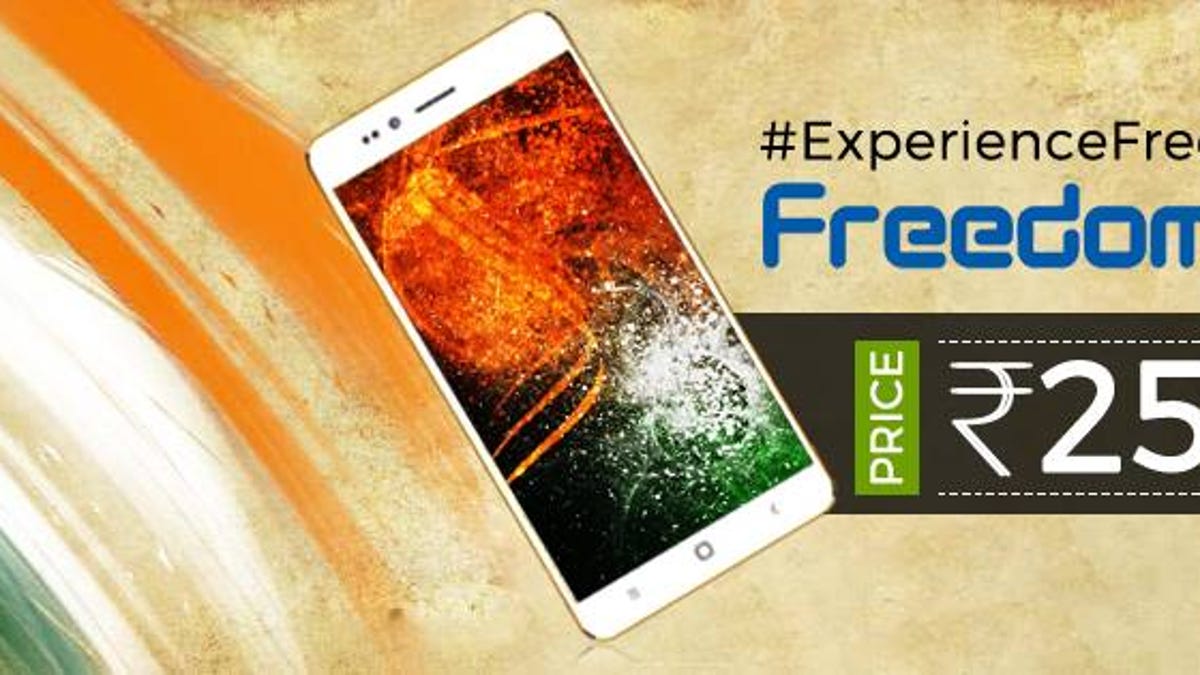A $4 smartphone is as unlikely as it sounds
An Indian startup is offering a smartphone for the price of a Starbucks coffee. Is it too good to be true?
Search your pockets for loose coins and gather up the petty cash around your house. Done? You may be holding enough money to buy a smartphone.
Indian startup Ringing Bells on Thursday began selling what may be the ultimate bargain basement phone -- a 251 rupee ($4, £3) Android phone it claims is the world's cheapest.
Interest in the Freedom 251 was so great, Ringing Bells website crashed. It's unclear how many people were able to grab one of the budget devices, but plenty of them couldn't, judging from the complaints that filled company's Facebook page.
Five-month-old Ringing Bells didn't respond to a request for comment, but said via Facebook that its technical team was looking into issues with the site. The company asked customers to "stay with us, support us and trust us."
Low-cost phones are thriving in India, the world's second-biggest smartphone market. The market is dominated by homegrown phone makers that are almost completely unknown outside of the country but have built large customer bases by appealing to local consumers.
As is true of many electronic gadgets, prices of phones have dropped in recent years. That's because component costs have fallen drastically, reducing the overall expense of cobbling together a smartphone. The result: a bounty of cheap devices.
But not $4 cheap.
"There is absolutely no way it is possible to make a smartphone for $4," said Ben Wood, an analyst at CCS Insight. "You could barely put a box around it and ship it for $4."
A mystery in the making
The most expensive phones, like Apple's iPhone and Samsung's Galaxy S range, typically cost more than $200 to make using top-of-the-range components. Prices fall depending on the quality of parts used, but rarely as dramatically as Ringing Bells is promising. Last year Mozilla's plans to launch a $25 smartphone in India fell through when the company decided it would be better off focusing on quality over cost.
Wood, the CCS analyst, says basic talk and text feature phones are the cheapest options "but there is still a bill of materials of at least $15 for anything vaguely functional."
And components are far from the only cost involved in making a smartphone. R&D, testing, component shipping and manufacturing costs and the cost of putting a device together all add up. So does packaging and shipping.
Ringing Bells is currently importing components from overseas and assembling them in India. It aims to make the phones domestically within a year, a Ringing Bells spokeswoman told AFP. Ringing Bells says on its website that it has a complete in-house product testing setup in India.
At the phone's launch event in India yesterday, Ashok Chadha, the company's president, handed out "beta" devices to journalists. The phones had stickers of India's flag on the back. It looked, according to the Wall Street Journal, like branding from another manufacturer had been covered up.
What the actual phone will look like is a mystery. Ringing Bells has circulated two different images of the phone, switching the images on its website last night to show a device that looks like a squat iPhone.
In its marketing materials, Ringing Bells said the phone is designed to "empower citizens, even in the remotest rural and semi-urban centers of India, with the latest in digital technology at incredible affordable prices."
The Indian media has speculated about the role the country's government may have played in making a phone available at such a cheap price.
"Looking at the component prices, this phone certainly is being subsidized by the Narendra Modi government," Tarun Pathak, senior analyst at Counterpoint Research, a consultancy firm, told Quartz.
Modi, India's prime minister, is promoting a scheme called "Made in India," which encourages Indian companies to make products on their home turf. He has also worked on a number of app projects around issues like farming, fishing, health care and women's safety -- all of which come preinstalled on the Freedom 251.
Representatives of the Indian government didn't respond to requests for comment.
At the launch event, Chadha said parts for the phone would be imported from China and cost 2,500 rupees ($36 or £25) per device. He still believes he will make money on the smartphones due to "economies of scale" and tax breaks for manufacturing, the Wall Street Journal reported.
Even if the Indian government is involved in the project, a subsidy of the magnitude needed to sell a phone for $4 "is completely unsustainable," said Wood. "I'd be surprised if the Indian government would want to unbalance the market to that extent."


